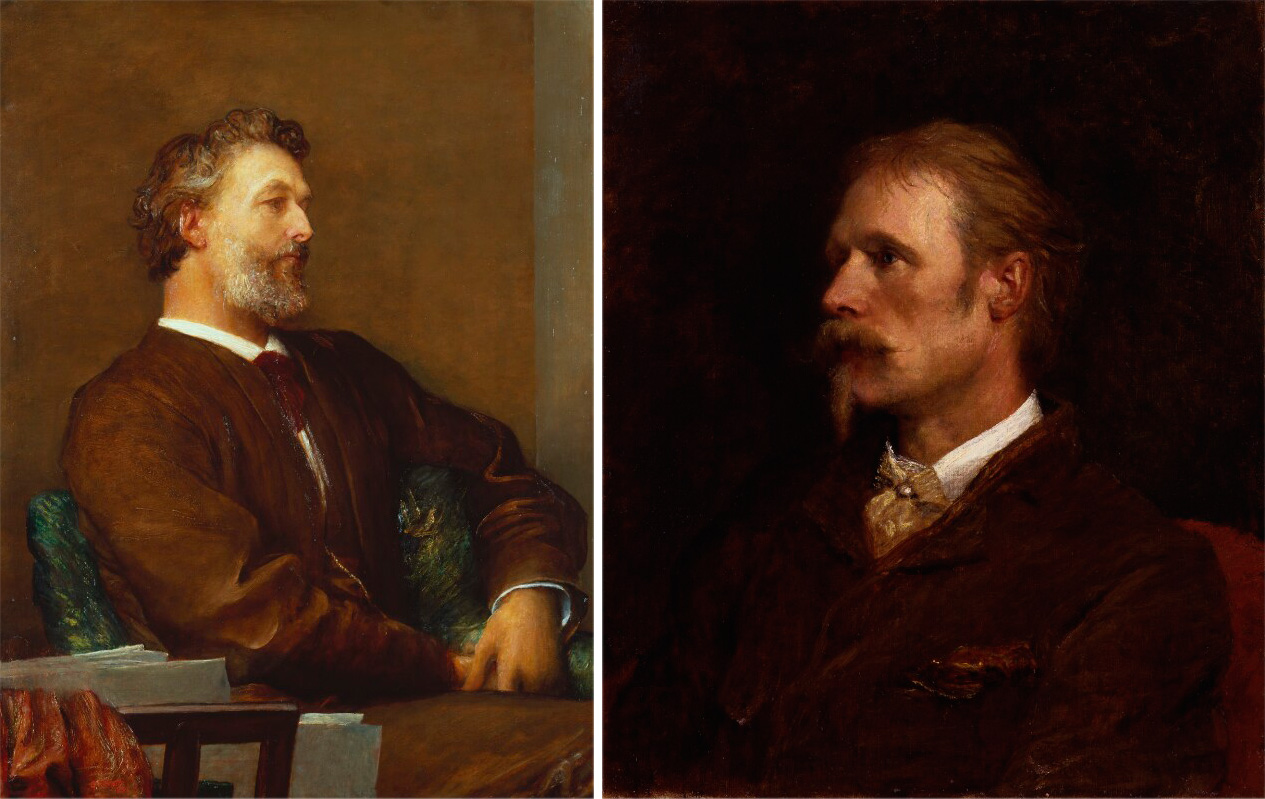The South London Art Gallery, which aspired to be a national gallery for south London, would not have existed without the vision and determination of a group of men and women, many of whom were artists themselves. Very rarely did they provide money, or at least money alone. Rather it was their passion, commitment and ability to fundraise that ensured that the gallery came into being and that it had a permanent home, one it has occupied for more than 125 years. Find out more about these people below.
WILLIAM ROSSITER (1831-1897) was apprenticed as a trunk maker but, after attending classes at the Working Men’s College in Great Ormond Street, became a teacher and published several text books. He established the South London Working Men’s College on Blackfriars Road in 1868. In 1878, he opened up two rooms in his house to the public and lent books from his own collection. The following year art exhibitions began to take place; aimed at working men and women these were always open on Sundays. In 1882 the college, free library and art gallery formally merged to become the South London Fine Art Gallery and Free Library. Rossiter bought Portland House on Peckham Road in 1889 in order to build a permanent home for the gallery in the grounds of the house.
JOHN RUSKIN (1819-1900) was a leading art critic, social thinker and philanthropist. Amongst his philanthropic endeavours was a donation to help establish the library at the South London Working Men’s College.
THOMAS HENRY HUXLEY (1825-1895) was a highly respected biologist, well known as a strong advocate of Charles Darwin’s theory of evolution. He was the first principal of the South London Working Men’s College.
WILLIAM GLADSTONE (1809-1898) was leader of the Liberal Party and served as Prime Minister for 12 years between 1868 and 1894. He was one of the first presidents of the council of the South London Fine Art Gallery and Free Library when it formed in 1882.
SIR FREDERIC LEIGHTON (1830-1896) was a painter and sculptor, and president of the Royal Academy of Arts from 1878 to 1896. He succeeded Gladstone as president of the South London Fine Art Gallery and Free Library in 1887. A member and trustee of the gallery’s council, he helped to raise money for the gallery’s permanent site on Peckham Road.
WALTER CRANE (1845-1915) was an artist, designer and social activist, known particularly for creating influential children’s books. He designed the inlaid wood centrepiece for the gallery’s original marquetry floor, which features the inscription ‘The Source of Art is in the Life of a People.’ He was a member of the South London Art Gallery’s council.
GEORGE FREDERIC WATTS (1817-1904) was a painter and sculptor associated with the symbolist movement. He was on the South London Art Gallery’s council, helping to raise funds for the permanent site on Peckham Road.
MARY WATTS (1849-1938) was a symbolist craftswoman, designer and social reformer. She helped to create work for impoverished people through the preservation of rural handicrafts and clay modelling. Member of the South London Art Gallery’s council.
SIR EDWARD BURNE-JONES (1833-1898) was an artist and designer associated with the Pre-Raphaelite movement. Member of the South London Art Gallery’s council.
LADY GEORGIANA BURNE-JONES (1840-1920) was an artist and political activist, involved in arts education for the working classes. She was a strong advocate of women’s rights, socialism and anti-war ideals. She worked on the biographies of both her husband Edward Burne-Jones and her good friend William Morris. A very active member of the South London Art Gallery’s council, she not only raised money for the gallery but encouraged private collectors to loan works for displays.
WYKE BAYLISS (1835-1906) was a poet, author and painter, associated with the Pre-Raphaelite Brotherhood. He is known for painting interiors of churches and cathedrals. Member of the South London Art Gallery’s council.
SIR JAMES LINTON (1840-1916) was a painter and lithographer. He was a member, and later the president, of the Royal Institute of Painters in Water Colours. Member of the South London Art Gallery’s council.
SIR JOHN LUBBOCK (1834-1913) was chairman of the London County Council in 1892. He was an influential Liberal-Unionist politician, a banker, and vice-chancellor of the University of London. Member of the council of the South London Working Men’s College, and later a member of the South London Art Gallery’s council.
JOHN WESTLAKE (1828-1913) was a lawyer and writer connected with the Christian Socialist Movement. One of the founders of the Working Men’s College on Great Ormond Street, where he taught mathematics, he was later the treasurer of the Rossiter’s South London Working Men’s College. Member of the South London Art Gallery’s council.
ANNA SWANWICK (1813-1899), author and feminist, was interested in social issues, particularly the education of women and the working classes. She dedicated her life to both literary and philanthropic pursuits. Member of the South London Art Gallery’s council.
JOHN COLLIER (1850-1934) was a British Pre-Raphaelite artist and author, famous for his portrait paintings. He wrote on topics such as ethics and religion. Member of the South London Art Gallery’s council.
ARTHUR COHEN (1830-1914) was a barrister and Liberal Party politician. Member of the South London Art Gallery’s council.
JAMES PYKE THOMPSON (1846-1897), corn merchant and philanthropist, built the Turner House Gallery in Penarth in 1887 so that his personal art collection could be viewed by the public. He also helped to support other museums, mostly in Wales. Member of the South London Art Gallery’s council.
JOHN PASSMORE EDWARDS (1823-1911), journalist, newspaper owner and philanthropist, funded many public galleries, libraries and hospitals, including a Lecture Hall and Library at the South London Art Gallery. He also paid for the art school next to the gallery to be built (now called Camberwell College of Arts).
